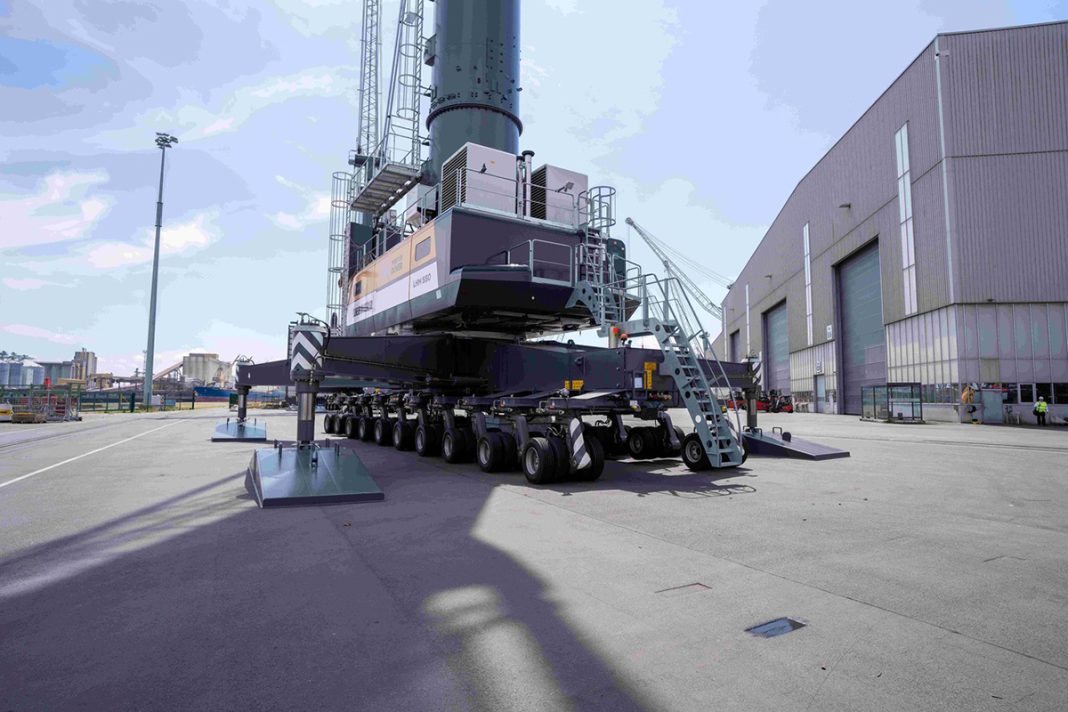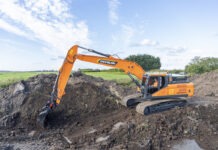Logistics powerhouse for Port of Dover
The Port of Dover’s acquisition of a LHM 550 from Liebherr Great Britain signifies a strategic enhancement in its cargo handling capabilities. The crane’s advanced features – such as the hydrostatic drive for extremely precise control, a minimum number of components, and reduced fuel consumption – ensure efficient operations, crucial for the busy Port’s diverse cargo range.
The LHM 550’s integration into the Port’s cargo handling equipment heralds a new era of productivity, with the capacity of up to 32 cycles per hour in container operation, the crane is an invaluable new asset for the Port, which handles a significant volume of the UK’s maritime trade. The Port’s specialised facilities, including multi-temperature-controlled warehousing and a secured terminal, are complemented by the crane’s robust performance, ensuring seamless cargo transitions and maintaining Dover’s reputation as a reliable trade gateway. The new LHM 550 joins the already established LHM 550 and LHM 280, of the previous generation.
Improving operations with the latest technology
As the global maritime cargo logistics industry shifts towards digitalization, decarbonization, and automation, the Port of Dover has invested in the LHM 550 which embodies these advancements in its technology.
With its more advanced software architecture, upgraded cabin, and all-rounder performance, the new LHM 550 will support increasing cargo handling demands that will serve the Port long into the future. As the backbone of the LHM 550’s operations, Liebherr’s service network and customer support will help ensure the crane’s high-volume cargo throughput is maintained with precision and efficiency.
The new LHM 550, just like the two other Liebherr cranes, runs on Hydrotreated Vegetable Oil (HVO), an alternative fuel made from 100% renewable raw materials. This aligns with the Port’s drive towards achieving its decarbonization targets and promoting sustainability in its operations. The cranes are also capable of working in wind speeds of up to a force 9 severe gale, or 75-88 km/h, allowing vessels to be unloaded in nearly all-weather conditions throughout the year.
Emma Whelan, Business Development Manager at the Port of Dover said: “The Cargo team would like to extend thanks to Liebherr for their professionalism and contribution to the extensive programme of investment that the terminal is undergoing to further enhance its deep-sea capabilities and support our robust eco-lens objectives.”
Rob Alexander, Sales Manager for maritime cranes at Liebherr Great Britain, commented: “We would like to thank the Port of Dover for their continued trust and partnership with Liebherr. The purchase of its third LHM crane is a testament to our shared commitment to excellence and innovation in port operations. We look forward to further supporting the Port in enhancing its capabilities and achieving new milestones.”
About Port of Dover
The Port of Dover is closing the gap every day between the UK and the world by connecting trade, travel, visitors and communities locally-globally, collaborating with local and international partners to create a more seamless, sustainable and tech-enabled port. As the UK’s busiest international ferry port and a vital gateway for the movement of people and trade, Dover handles £144 billion of trade per year, 33% of UK trade in goods with the EU and welcomes over 11 million passengers.
The port’s cargo terminal, which opened in 2019, has seen a thriving trade in various cargo types, including perishables, breakbulk, containers, project cargo, general cargo, and grain. In 2021, the port received its first steel cargo and has since seen substantial growth in this commodity, handling products like rebar, coil, mesh, beams, and plate. The cargo terminal has experienced a thriving breakbulk trade, in addition to its established perishable freight business. Port of Dover continues to handle a high volume of perishable cargo, with weekly specialized reefer vessel arrivals. The port’s warehousing has a capacity of 9,639 m² with 8 individually controlled chambers with a maximum of 693 pallets per chamber, totalling around 5,500 pallets.








